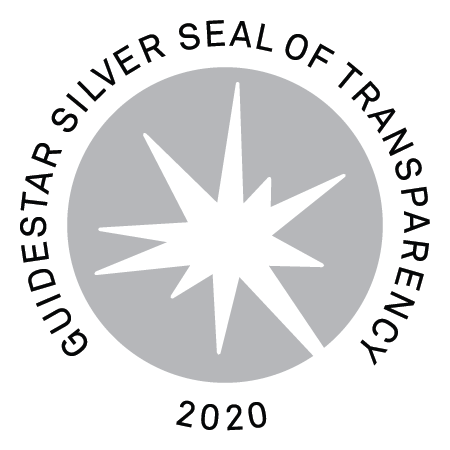Mr. Chairman, Mr. Vice Chairman, and Members of the Select Committee. On behalf of the Congressional Management Foundation, I wish to thank the Committee for inviting CMF to testify on the state of citizen engagement.
My comments are rooted in CMF's unique history of working with Congress for the past 41 years, and more recently, in training the citizens that advocate for particular causes on Capitol Hill. This perspective will outline the current challenges facing Congress with regard to citizen engagement, acknowledge the bright spots that exist, and identify opportunities for positive change.
While there are dozens of ways Congress can interact with constituents such as social media, in-person town hall meetings, and ad-hoc meetings, the most prevalent and widespread form of democratic dialogue in America (and I use that term very loosely), is the exchange of identical mass email campaigns, which remains the dominant tool used by citizens, interest groups, and Congress.
But with millions of email messages flooding Capitol Hill every month, harried staff are barely able to remain afloat. The Internet fundamentally changed the economics of advocacy. For example, in the 1970s, only a handful of associations and nonprofits could marshal thousands of communications to Capitol Hill simply because it cost money to buy postcards and postage stamps. Now, the costs of organizing citizens around causes and legislative agendas are minimal, after plummeting in the late 1990s and early 2000s.
Using data from House Information Resources and some of your software vendors, CMF estimates that the House of Representatives alone now receives about 25 to 35 million messages a year from constituents. Seventy-five to 90 percent of these communications are facilitated by associations and nonprofits with constituents from Members' districts. While it's encouraging to see so many people engaging in public policy, these interactions appear to be largely superficial, devoid of any meaningful or thoughtful exchange of ideas. In a CMF poll of grassroots directors of associations and nonprofits, 79 percent said mass email campaigns are their top strategy to influence Congress. However, only three percent of senior congressional staff report this strategy has a lot of influence on undecided lawmakers. Put simply: most associations and nonprofits that are generating the vast majority of email are employing methods that are neither effective to their advocacy efforts, nor helpful to congressional offices for public policy decision-making.
Regrettably, while congressional offices invest a significant amount of time and resources responding to constituent communications, most offices have not shifted their philosophies, workflows, and writing style to adapt to the 21st century. One study of congressional offices indicated that more than half of Members of the House are not reading mail reports of mass email campaigns coming into their offices. And a preliminary analysis of the open rates by constituents who received responses is even more troubling. CMF examined the open rate of constituents who had written their Member of Congress and received an email reply.While this is preliminary data based on a small sample, the average open rate was under 40 percent, and no office had an open rate over 50 percent. Think about those numbers: half of the emails going to Congress aren't read by Members, and half your replies are being ignored by constituents. That is the definition of a system sorely in need of reform.
The news isn't all bad: evidence suggests that Members of Congress deeply care about their constituents' views. In CMF surveys of both Members of Congress and congressional staff, constituent meetings and constituent views are the most important factors in shaping congressional opinion and in understanding the impact of public policy decisions on the nation. The concept that the governing bodies of this nation are listening to those they govern is a bedrock principle upon which this republic was founded. Members are doing the best they can to listen to citizens.
Citizens, in turn, want to hear from their representatives. A 2016 survey examining constituents' needs and expectations revealed that the top characteristic, with 76% of respondents agreeing it was "very important," is staying in touch with constituents.[1]
So if both Congress and its constituents believe healthy, robust engagement is important, Congress must adapt to 21st century standards for citizen engagement in order to improve the channels of communication. For the Committee's consideration, CMF recommends the following efforts.
First, the rules governing the use of the Frank should be updated. As most congressional communications directors are aware, these rules were designed when the printing press was the primary tool to communicate. CMF recommends the Committee create a task force of current press secretaries, perhaps from your own offices, to examine and recommend changes to the Franking rules. As a former House and Senate press secretary, I can personally attest that Franking rules are outdated and arcane. I must emphasize, the Franking Commission is not to blame for these challenges. They do the best they can with the rules Congress has handed them. Only through a comprehensive examination of current rules will improved engagement standards result.
Second, Congress also could incentivize practices and technology with proven track records for improving citizen engagement and constituent satisfaction. Dr. Michael Neblo will testify shortly about the joint research CMF conducted with him and his colleagues on online town hall meetings. This promising research suggests you can build trust through technology.
Third, we should look to current examples in Congress for creative solutions. Last year, CMF launched a new program for Congress, the Democracy Awards, and we specifically identify best practices examples of transparency, accountability, and innovation. For example, one of the 2018 winners was Representative Rob Wittman (R-VA)'s office, who has an e-newsletter practice that narrows the e-newsletter topic to the specific interests of constituents in a variety of areas. Multiple hyperlinks provide constituents with nonpartisan information on issues pending before Congress. Among this year's winners, Representative Mark DeSaulnier (D-CA)'s office livestreams town hall meetings on their social media platforms – and the congressman takes questions during the meeting from followers.
The basic principle at work here is that Members are using technology wisely to reach tens of thousands of constituents. While a strictly in-person town hall meeting is indicative of the legislator making him or herself available, they can only reach a fraction of their district this way. Yet through innovative, consistent, and thoughtful use of technology, House members can reach large numbers of constituents while creating a constructive dialogue.
Finally, there are some solutions that are outside of the control of this committee and Congress as an institution. Individual members face the challenge of updating their methods and practices to conform to the expectations of a modern consumer, where anything less than instantaneous is unacceptable.
And yet, the written word and email is not going away any time soon. The first telegraph message was sent by William Morse from the U.S. Capitol building on May 24, 1844 to Baltimore, with these words, "What Hath God Wrought." Words which could have been said by any of your legislative correspondents this morning when they saw the pile of emails that arrived overnight. Western Union didn't close their telegraph office on Capitol Hill until 164 years later in 2008. If that's an indicator, we could have at least 100 years of constituent email management ahead of us.
And while changing the culture and philosophy of how Congress communicates with their constituents sounds intangible and unachievable, it is the foundation of improving the system effectively.
Let me conclude with two data points. The first is from the Rasmussen polling company, which for the last decade has asked Americans this question: "Do most members of Congress care what their constituents think?" The percentage of respondents who agree with that statement has hovered between 11 and 21 percent in the last few years. Americans do not believe that you're listening to them – and yet CMF, your staff, your colleagues, and every lobbyist and advocate in Washington knows you are. You just have to convince your constituents that you are listening.
So, how do you do that? With the help of the University of Maryland and Voice of the People, another nonpartisan organization, CMF asked American voters what they really wanted from their Member of Congress. We asked, if you, as a constituent, wrote your representative in Congress asking them to vote a particular way on a bill, and got an email back saying that Member would not vote that way, how would you feel about that? Nearly eight out of ten voters on the survey said they would be satisfied, "If I had confidence that my views were taken into account."
Whatever systems evolve in the years to come, whatever this committee recommends and the House adopts, the core features and attributes must facilitate and communicate that Congress is listening to constituents. Congress has an extraordinary opportunity for constituent engagement that, for the most part, it is failing to take advantage of. CMF recognizes that congressional staff levels have been cut while the total communications flooding your office has sky-rocketed. All the more reason to seek more efficient and effective uses of technology to build better relationships with your constituents.
While Congress cannot control the "wholesale" level of democracy that includes the Internet, cable news, and social media, you can control the "retail level" of democracy – the direct interaction between you and your constituents. This "retail level" of engagement is vital for increasing trust between citizens and elected officials in our democracy. Solutions that hold true to that maxim afford Congress the opportunity to not only improve how it engages constituents, it can actually boost Americans' faith in our system of government.
[1] John Lapinski, et. al. "What do Citizens Want from their Members of Congress?" Political Research Quarterly: 1-11. 2016. University of Utah.


